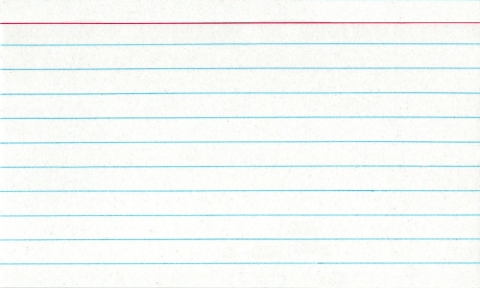Nabokov arises early in the morning and works. He does his writing on filing cards, which are gradually copied, expanded, and rearranged until they become his novels.
The Paris Review: The Art of Fiction No. 40
I’m working through each section of a paper in the Craft of Research series this spring using an image that has worked for me in the past, and which is by no means original, but which I think I just found a good way to label. In general, I tell students to distinguish each section by their “bases” and their “aims”. The theory section, for example, is based on the literature and aims to activate the reader’s expectations of the object, while the analysis is based on the data and aims to challenge those expectations. (They can decide they have other bases and aims; the idea is to make sure they differ in ways they understand from section to section.) But I also tell them to compose their papers one paragraph at a time and we need some way to map the somewhat abstract aims and bases of the sections onto the paragraphs they comprise. This is where I think I may have hit on something.
Think of each paragraph as represented by an old-fashioned cardboard index card. In the title field (above the red line), imagine your key sentence, and then imagine a list of your sources on the rest of the card. I’ve always struggled to label that “rest”. Is it the “body” of the paragraph? Perhaps, but people also like to talk about “body paragraphs”, i.e., the paragraphs in an essay that are not the introduction or the conclusion. They also talk about “topic” sentences for these paragraphs, as distinct from the “thesis” statement of introductory paragraphs. But this doesn’t work for me because every paragraph, including those in the introduction, will have a “key” sentence, one of which will include the thesis statement, i.e., “This paper shows that…” And, in any case, to talk of “keys” and “bodies” seems to mix our metaphors (bodies don’t have locks), so I’ve always wanted another word for the the rest of the paragraph.
Now, while a paragraph is not “a box within which” but “a center around which,” it still occupies a definite volume. It has a form. And so we can talk about the “content” of the paragraph. The key sentence will set up a little difficulty for the paragraph to solve and the content of the paragraph provides the resources we need to solve it. The paragraph “contains” the information we need to support, elaborate, or defend the key sentence. Again, although a paragraph isn’t really a box, the key sentence gives us a particular kind of “access” to the materials that paragraphs presents. The contents are arranged in such a way that the reader will find it easier to believe, understand, or agree with the key sentence.
A research paper can consist of 20 or 40 or 80 paragraphs (or more). Each paragraph can be represented by its key and its content, which, in turn, can be all be summarized on a single 3″ x 5″ piece of cardboard. (It is sufficient that you imagine this finitude, appreciate it; you don’t have to run out to an office-supply store.) Since a paragraph consists of no more than 200 words and takes under a minute to read, there is a limit to how many texts you can cite or how much data you can invoke. Reminding yourself of these limits is a good way to begin to face the much smaller difficulty that writing a paragraph for your theory section constitutes when compared to actually having a theory. The same can be said of the much smaller difficulty that writing a paragraph of analysis constitutes when compared with actually discovering the truth about your object. Try to keep these difficulties distinct, a half page for each little problem.
_____
Image credit: Wikipedia.
